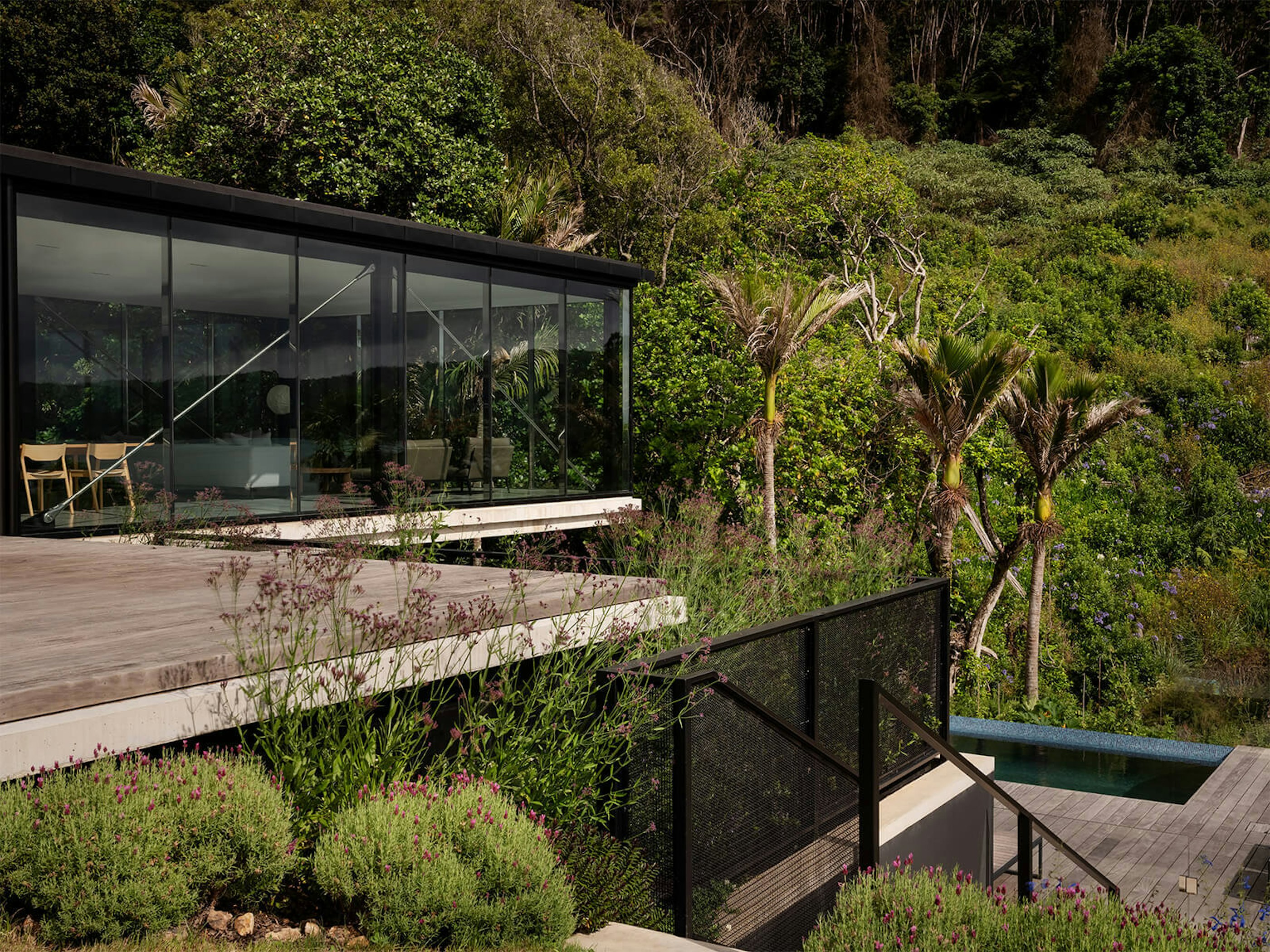Mahuika
Waiheke Island luxury family home

Ngātuk Tahoraiti Waingaro Takutai Ahi
The ridges of a hill. A forest clearing. A lost stream. The sea coast.
Fire
Colonisation saw the burning and clearing of the native forest in the bay during the late 19th century. A Villa constructed in 1905 and 1970s boathouse blocked the mouth of the stream. A shoreline dominated by giant macrocarpa that darkened the valley, a queen palm stood at the rear of the Villa. Since the construction of the Villa 111 years ago, the bush crept back to form a small clearing whilst the Villa deteriorated beyond repair.
The clients were a family living abroad that commissioned us to design a holiday home that included a 20m pool as they wished to form a connection back to their native Aotearoa.
Our response to their new house was to orientate the length of the building alongside the ridge line parallel to the coast, stepping down in a total of four levels. The bedrooms cascade down the hill, while the main living pavilion is where the Villa once stood. The concept for the glass pavilion was to take advantage of the three different conditions: the coast, the stream and the dense native bush. They operated simultaneously, with limited space available on the site. Without damaging any native trees, we placed the swimming pool under the main pavilion, parallel to the stream, which created an intimidating pool area and a dramatic cantilever of six meters.
The design utilises a curated material palette consisting of dark cedar for the bedroom pavilions and low reflective glass and concrete for the living pavilion. A local stone wall that hides the boathouse and supports the parking area above serves as the house's entrance. The house can be entirely self-sufficient, with its private sewage treatment and an extensive solar system to provide power.
The macrocarpa (Monterey cypress) that dominated the shoreline was removed and replaced by several thousand native plants in hopes of improving the pest eradication programme, which recalled having seen rare Kaka and Weka birds return to the valley.
In February 2020, weeks before practical completion and handover to the client, an accidental fire tore through the house, destroying the two upper pavilions but leaving the lower concrete pavilions almost undamaged. The house was rebuilt and completed in February 2021.
















Location
Waiheke Island, Auckland, New Zealand
Designers
- Daniel Marshall
- Shiqi Shelley Lin
- Sukshma Paranjpe
- Tim O'Brien
Photographer
- Sam Hartnett
- Ernie Shackles
Awards
- NZIA – Auckland Architecture Award, Housing